
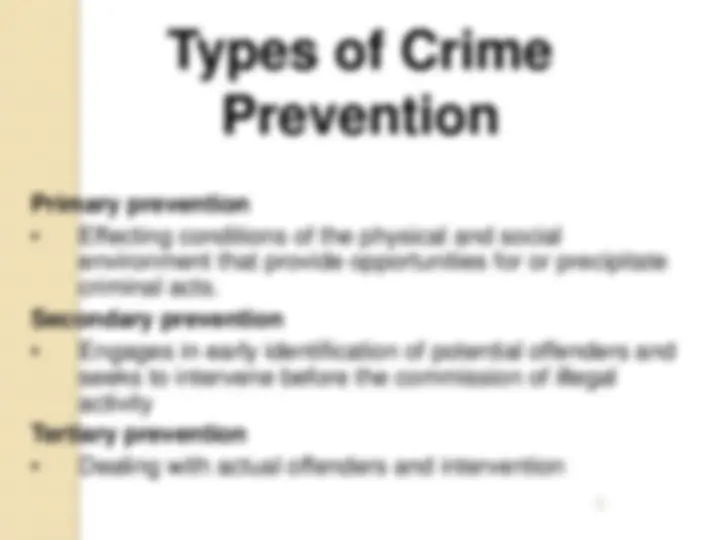
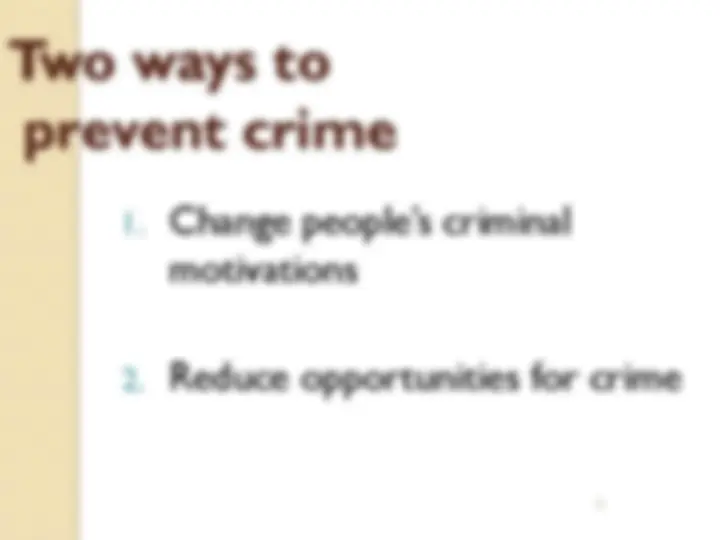
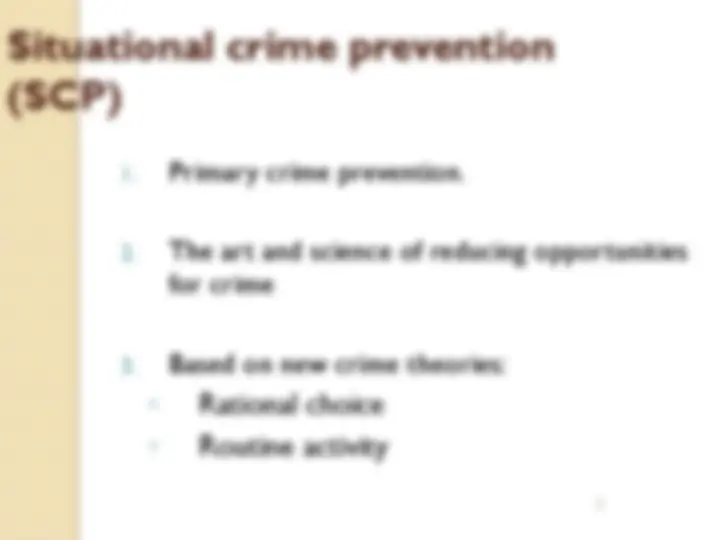
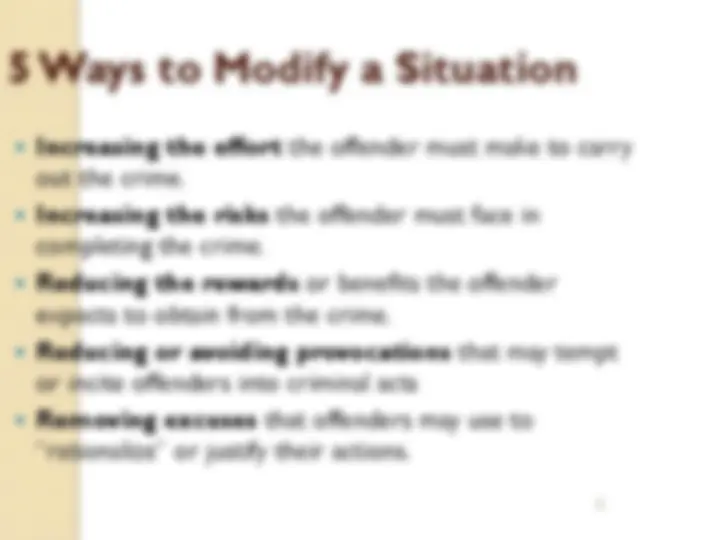
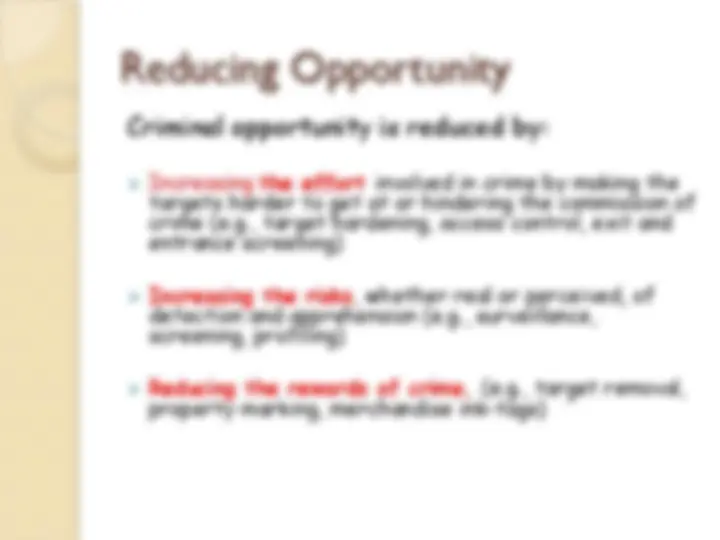
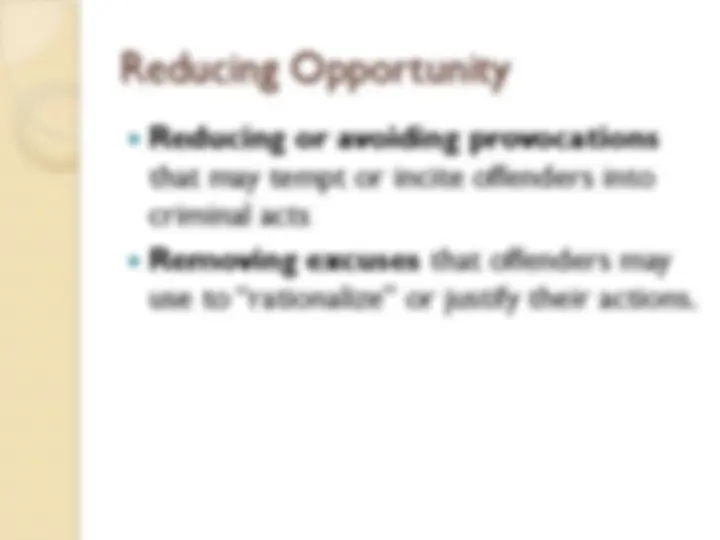
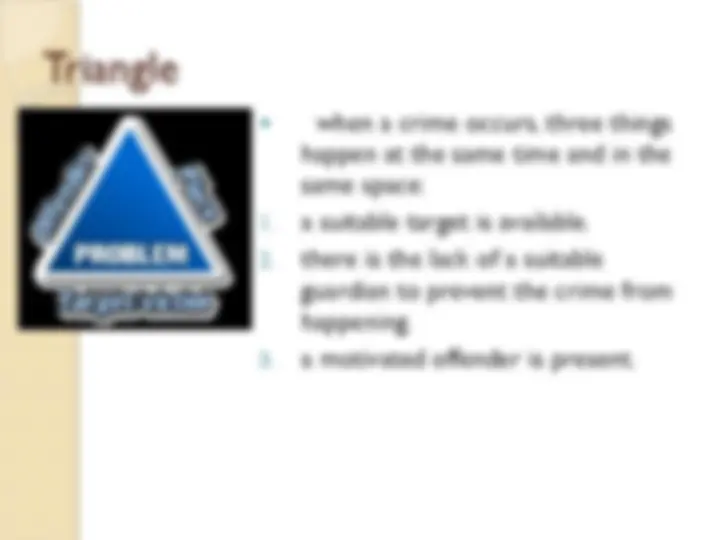
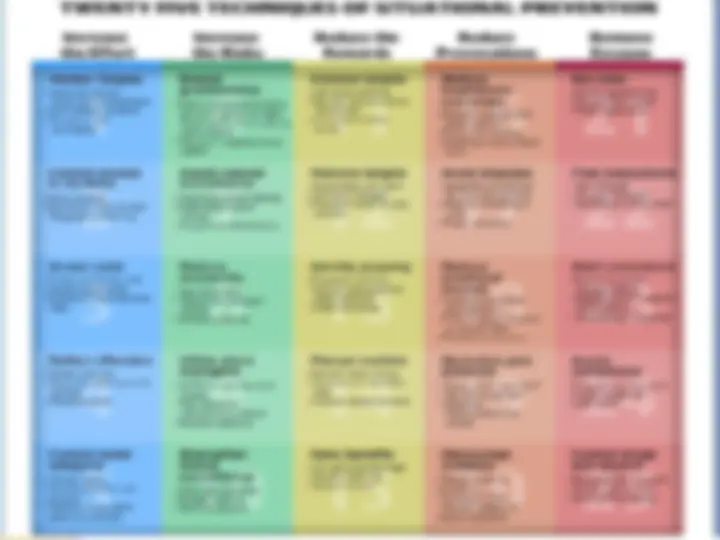
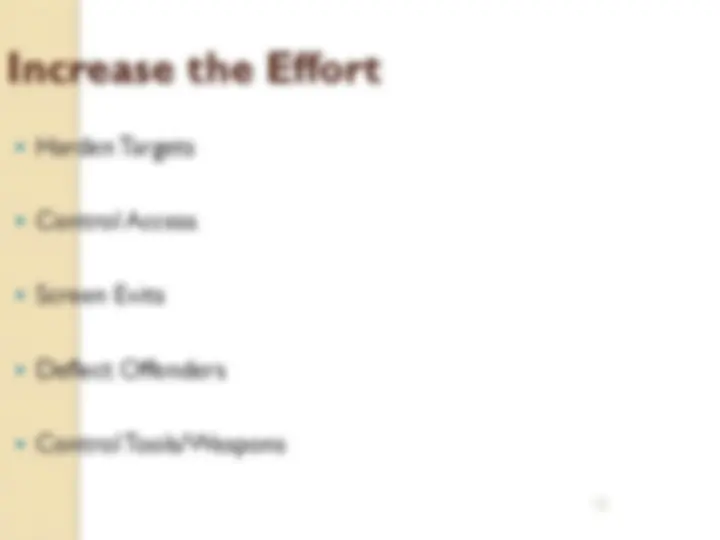
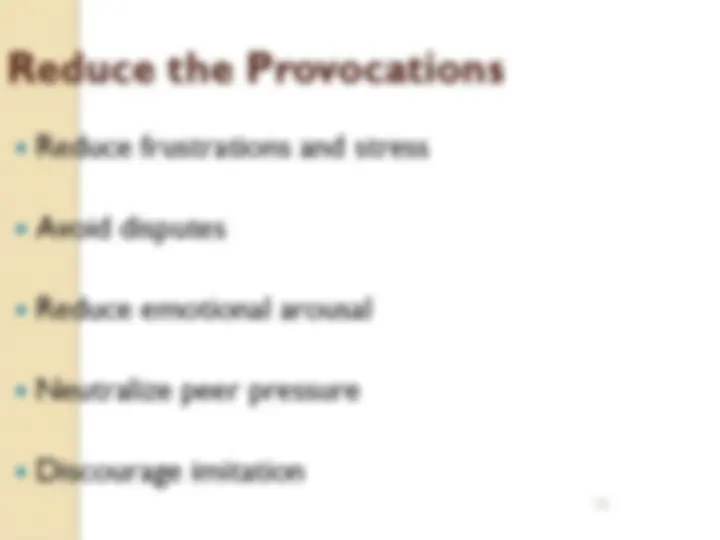
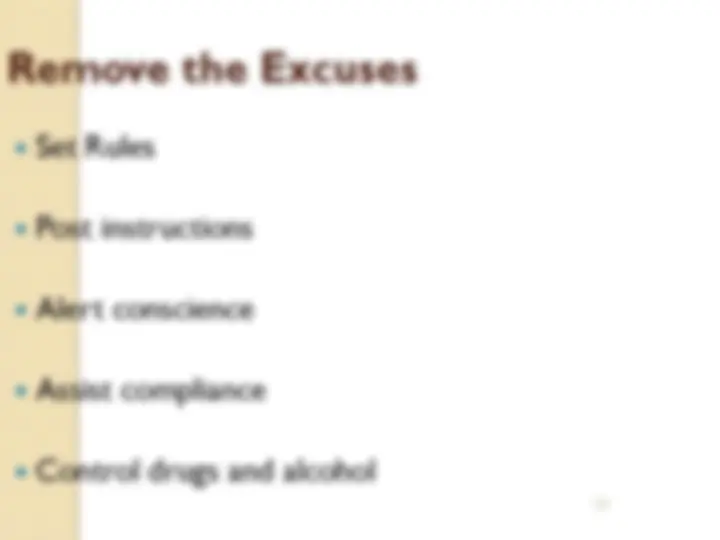
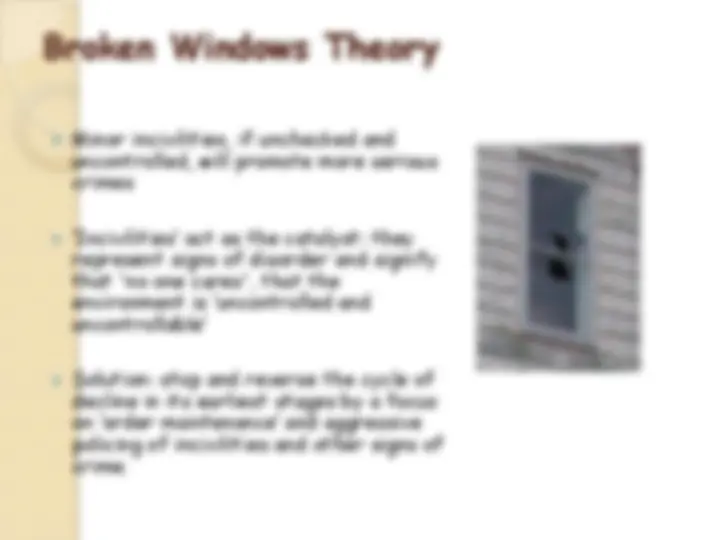
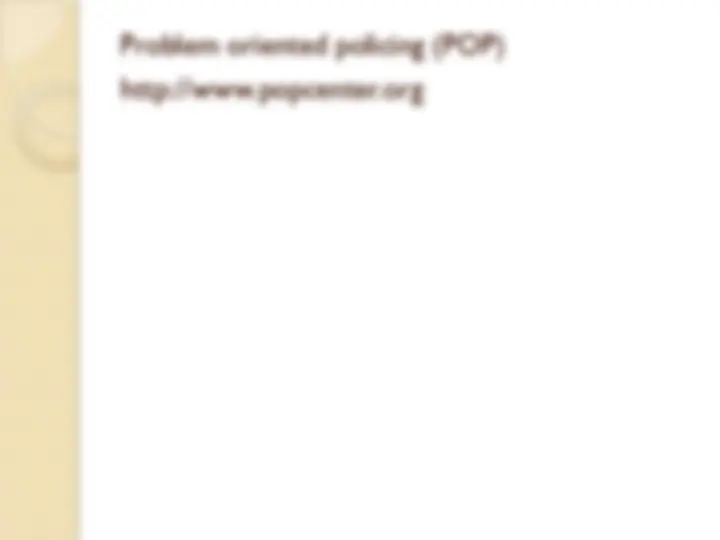
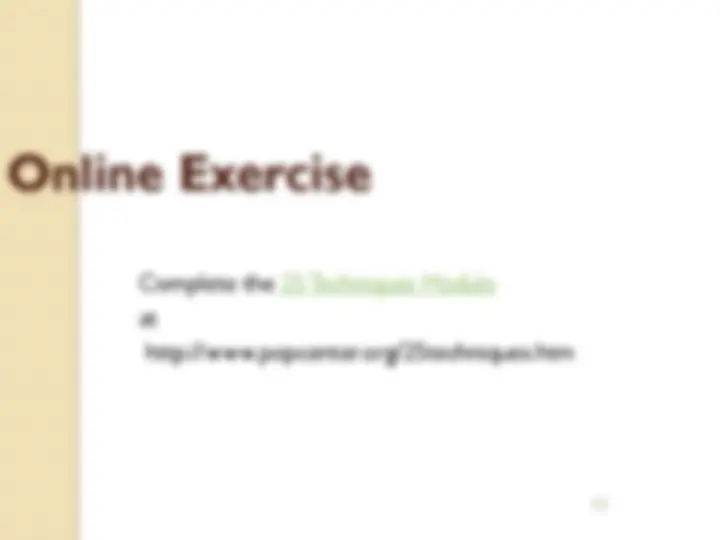
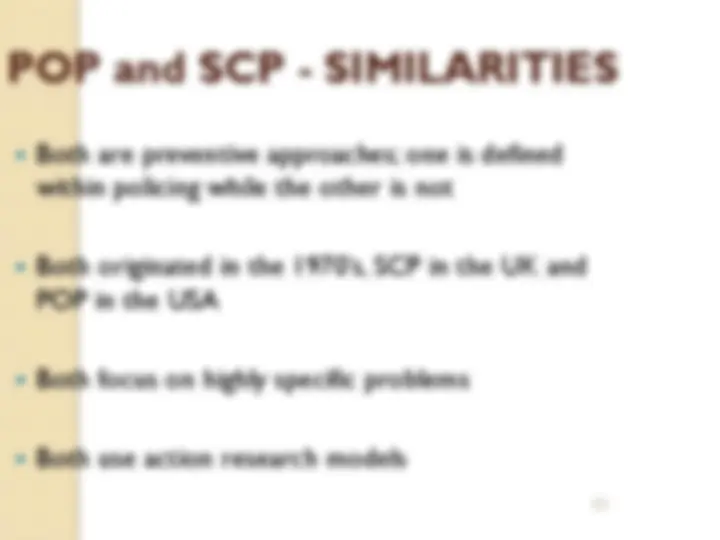
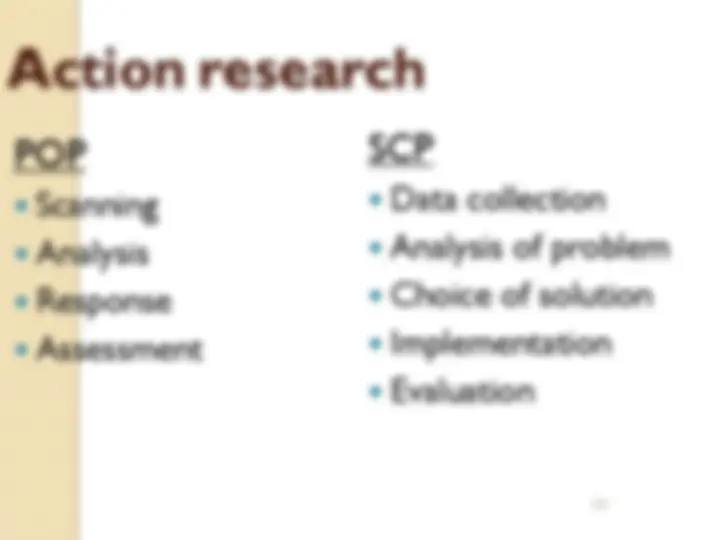
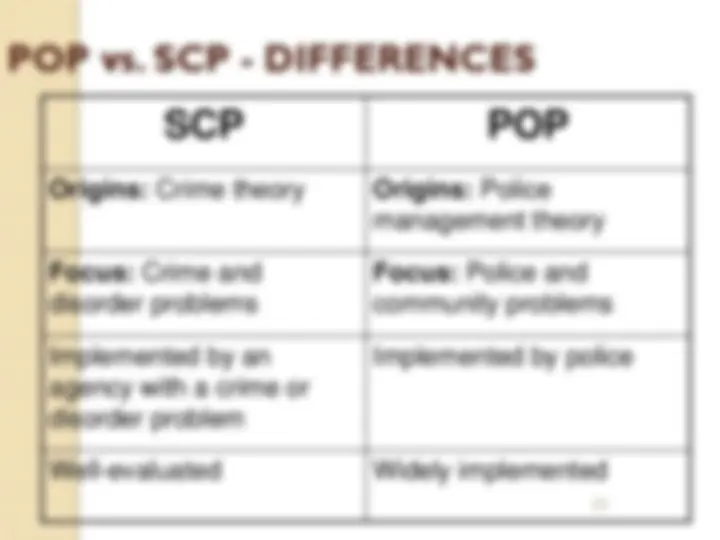
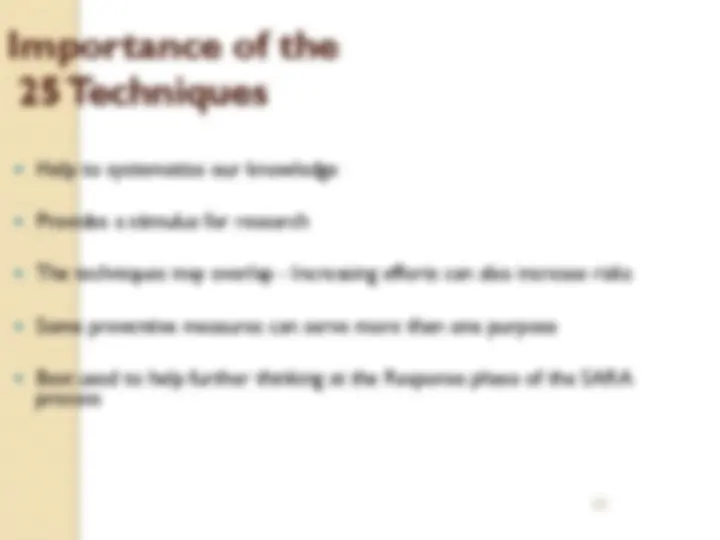
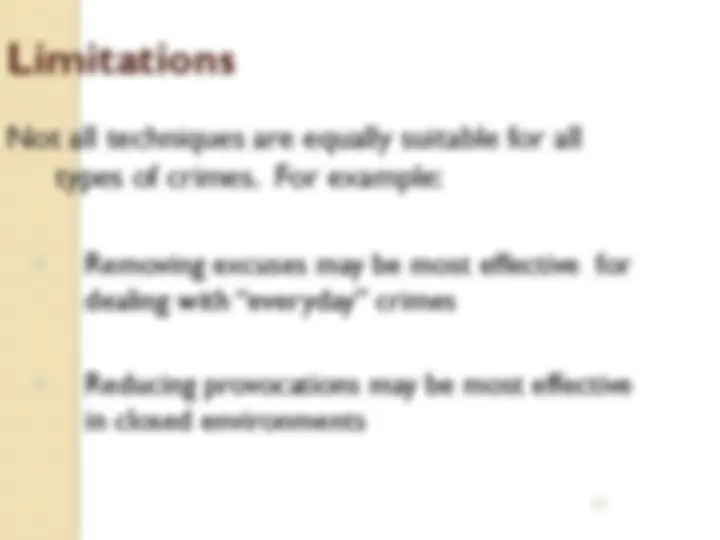
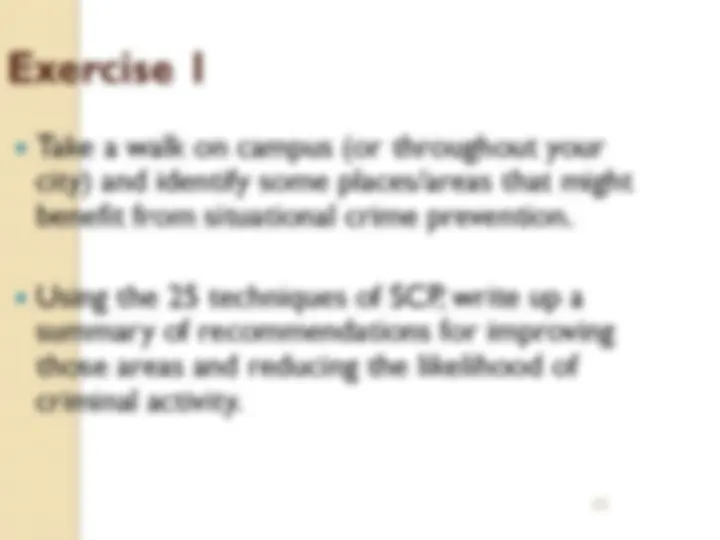
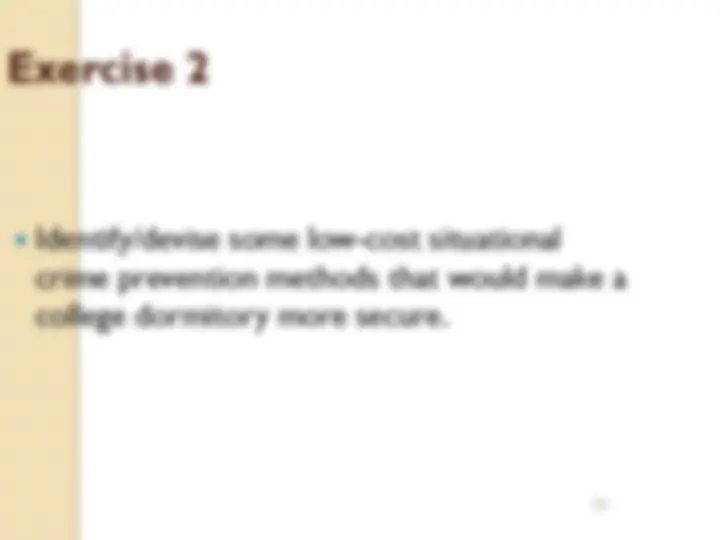
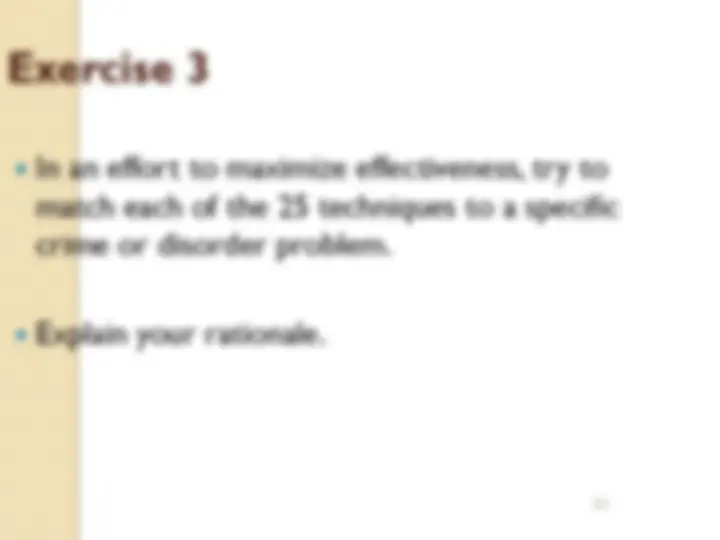



Study with the several resources on Docsity

Earn points by helping other students or get them with a premium plan


Prepare for your exams
Study with the several resources on Docsity

Earn points to download
Earn points by helping other students or get them with a premium plan
Community
Ask the community for help and clear up your study doubts
Discover the best universities in your country according to Docsity users
Free resources
Download our free guides on studying techniques, anxiety management strategies, and thesis advice from Docsity tutors
environment that provide opportunities for or precipitate criminal acts. Secondary prevention. •. Engages in early identification of potential offenders and.
Typology: Lecture notes
1 / 31

This page cannot be seen from the preview
Don't miss anything!
























1
Chairperson, Centre for Criminal Justice Administration
2
4
Two ways to
prevent crime
motivations
5
Situational crime prevention
(SCP)
◦ Rational choice ◦ Routine activity
7
Focus of New Crime Theories
Crime, not criminality
Events, not dispositions
Near, not distant causes of crime
How crime occurs, not why it happens
Situational and opportunity factors
8
5 Ways to Modify a Situation
Increasing the effort the offender must make to carry out the crime. Increasing the risks the offender must face in completing the crime. Reducing the rewards or benefits the offender expects to obtain from the crime. Reducing or avoiding provocations that may tempt or incite offenders into criminal acts Removing excuses that offenders may use to “rationalize” or justify their actions.
Reducing Opportunity
Reducing or avoiding provocations that may tempt or incite offenders into criminal acts Removing excuses that offenders may use to “rationalize” or justify their actions.
Reducing Opportunity
Opportunity for crime can be
reduced directly & indirectly:
(i) Directly: “organizing” the immediate physical environment (e.g., target hardening, access control, target removal)
(ii) Indirectly: “organizing” people to foster or reinforce their individual and collective behaviour to minimize their vulnerability to crime (e.g., Neighbourhood Watch)
Triangle
when a crime occurs, three things happen at the same time and in the same space:
14
16
Increase the Risks
Extend guardianship
Assist natural surveillance
Reduce Anonymity
Utilize place managers
Strengthen formal surveillance
17
Reduce the Rewards
Conceal targets
Remove targets
Identify property
Disrupt markets
Deny benefits
19
Remove the Excuses
Set Rules
Post instructions
Alert conscience
Assist compliance
Control drugs and alcohol
Broken Windows Theory
Minor incivilities, if unchecked and uncontrolled, will promote more serious crimes
‘Incivilities’ act as the catalyst: they represent signs of disorder and signify that 'no one cares', that the environment is ‘uncontrolled and uncontrollable’
Solution: stop and reverse the cycle of decline in its earliest stages by a focus on ‘order maintenance’ and aggressive policing of incivilities and other signs of crime.